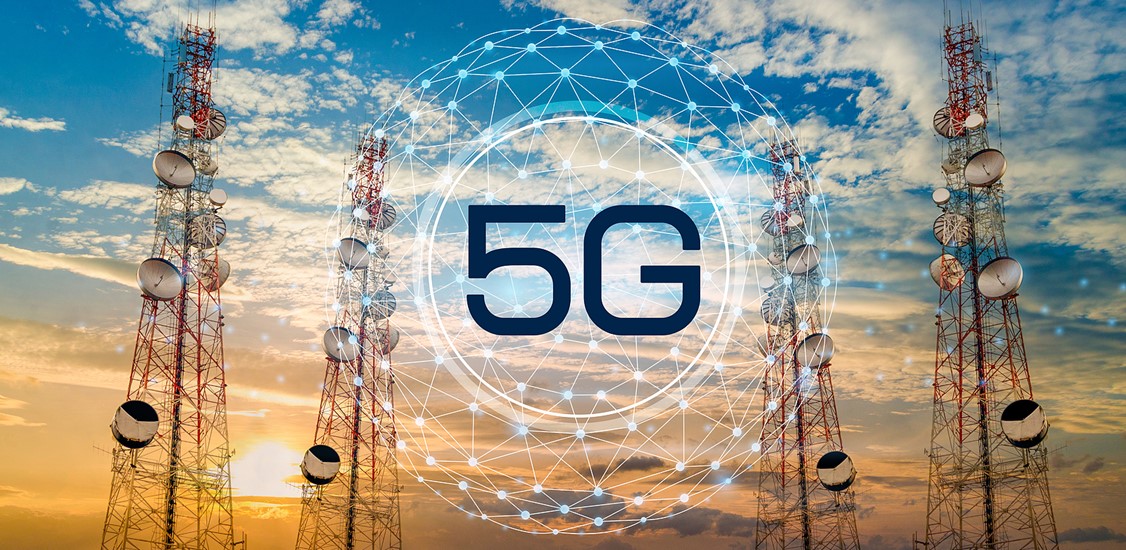5G is one of the most exciting technical advancements in recent times and represents a profound impact mobile technology may have on the society. For the consumer it promises a faster and more convenient digital world. For operators it provides an opportunity to move beyond connectivity and collaborate across sectors such as finance, transport, retail and health to deliver new, rich services to consumers and businesses.
However the journey for 5G, while exciting, is also challenging and requires careful judgement on its timing and investments. 5G networks are cloud native and fundamentally different from the previous generation of networking technology. The amount of capital investment needed to transform existing networks is substantial. Operators need to carefully understand monetization opportunities to be able to offer value added services to both consumers and enterprises. There are three aspects that are critical to the monetization paradigm - network performance, operator business models and native 5G architectures.
Performance elements for monetization
- Enhanced Mobile Broadband: While full mobile 5G may take some more time to be deployed worldwide, it will eventually deliver significantly faster, more uniform data rates at much lower latency than its predecessors, and better performance whilst on the move. The increased performance will make it feasible to access and consume services such as HD/4K video streaming and virtual/augmented reality on mobile devices. 5G will also allow a far higher number of devices to simultaneously connect to the network, thereby alleviating bottlenecks often seen in LTE network where data services become slow or even inaccessible in crowded locations.
- Massive Machine Type Communication: The vision of this use case is to enable seamless connectivity for the widely predicted tens of billions of IoT devices and sensors. Massive IoT will support across a broad spectrum of applications including connected vehicles, smart energy and smart cities/infrastructure to name but a few.
- Ultra-Reliable Low Latency Communications uRLLC: This use case enables the launch of new services that will revolutionize industries with ultra-reliable, low latency communications. Examples of where this type of communication will be required would include remote monitoring and control of critical infrastructure (e.g. smart grid), self- driving vehicles and industrial robotics, as well as commercial and military drone control, remote surgeries.
Business models for monetization
- B2B: In the business-to- business (B2B), the “slice buyer” is the end customer, typically a enterprise or business entity that uses the slice to realize a use case for internal operations. Examples:
-
- A manufacturer buys a service that is based on a network slice to realize a robotics use case on a production line.
- A cloud service provider buys a slice to provide dedicated, high- throughput wireless connectivity for a gaming platform company who then uses the combined package to power a premium, high-performance game subscription for consumers.
- B2C:In the business-to-consumer domain, the CSP charges a premium directly to the consumer for higher quality or dedicated access to content that is delivered by slicing. Examples:
-
- A customer buys access to low latency mobile gaming on their smartphone or gaming device.
- The Communication Service Provider offers fixed wireless access (FWA) based on a dedicated network slice.
- B2B2X - Probably the biggest potential area that will allow device manufacturers and service provides embed 5G connectivity as part of their product and services.
5G architecture for monetization
- Cloud & Virtualization - 5G networks by design are cloud native and virtualized, following the NFV principles and standards to deliver auto-scaling and fault tolerance for the network.
- Microservices & Edge computing - In order to deliver the ultra-low latency and self-healing required to support 5G, network and charging components that were previously centralized will be moved closer to the network edge in a distributed fashion. There will be a move away from a small number of large central monolithic application instances to multiple smaller, streamlined components optimized for carrying out specific tasks where they are required.
- Network Slicing - Network slicing provides huge business potential for CSP’s (communication service providers), which opens up many different opportunities and possibly go-to-market roles – especially in the enterprise segment. 5G will enable communication service provider to provide portions of their networks for specific customer use cases such as mobile broadband, smart energy grid, connected vehicles or smart cities. Each use case receives a unique set of optimized resources and network topology with SLA- specified properties such as connectivity, speed, latency and capacity that suit the needs of that use case. Network slicing allows the creation of multiple virtual networks on top of a shared physical infrastructure, unlike 4G in which all services and use cases share the common infrastructure.
Network slice deployment journey
The deployment of network slices is a journey over multiple years and will take place as new markets and use case are created.
To start with slices will be basic and limited in number. There will be cost pressure and the slices will be fairly static and most use cases will include shared and isolated traffic. Customization will be limited to derivations of the generic slice types and use case requirements will not be demanding. Slicing will appeal to large enterprise customers with big budgets who are in most need of slicing capabilities to solve immediate pain points.
Once communication services providers have identified use cases with requirements that a simple slice can satisfy, the organization must identify ecosystem partners and a GTM strategy, and then learn as you grow. Build a plan for the ecosystem to pursue, depending on the competitive landscape. Communication service provider will have to act as a network developer, a service creator or a hybrid of the two. Communication services provider will need to assess the capabilities they process and build new capabilities and what roles will need to be filled by partners.
With maturity slices will become more dynamic and the cost of operating them will decline. Slices will become much more customized and completely isolated from one another, with the ability to meet demanding requirements. Right now, CSPs need to focus on enabling the very first, basic proof-of-concept slices to gain the market and technical experience required to lay the foundation for more advanced slices.
In long-term, however, the slicing market will change dramatically. Over time, prices will fall, while the slices themselves become dynamic, with a high degree of resource allocation and isolation. Many cases will include very demanding requirements, and slices will be adapted for niche segments with smaller customers that have specific needs.
Conclusion
Monetization of 5G investment is hugely important for operators. While 5G provides huge opportunities, operators have to carefully leverage new value added services, ecosystem partners and business models to generate an ROI on their investments.
This article is co-authoured by Saurabh Agrawal, Practice Leader, Network Cloud, 5G & Edge at IBM and Nishant Srivastava, Associate Director at IBM Consulting.
 Saurabh Agrawal leads the Network Cloud , 5G and Edge practice at IBM India and one of the goals for him in this role is to assist telecom clients in transforming and modernizing their networks as they embark on the 5G journey. He brings more than 23 years of experience in the industry and has worked on some of the largest transformation engagements for telecom clients worldwide. Working with clients and using technology to design solutions that give simplicity, increased value, and satisfaction to their end customers is one of his passions.
Saurabh Agrawal leads the Network Cloud , 5G and Edge practice at IBM India and one of the goals for him in this role is to assist telecom clients in transforming and modernizing their networks as they embark on the 5G journey. He brings more than 23 years of experience in the industry and has worked on some of the largest transformation engagements for telecom clients worldwide. Working with clients and using technology to design solutions that give simplicity, increased value, and satisfaction to their end customers is one of his passions.




















